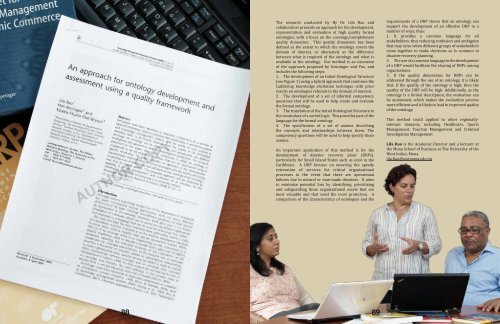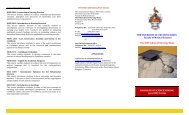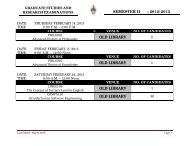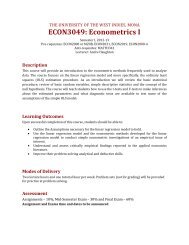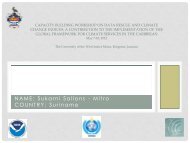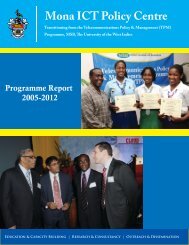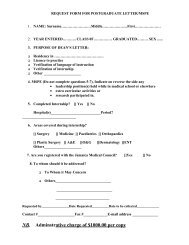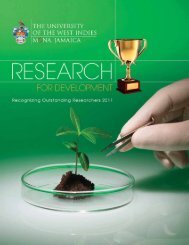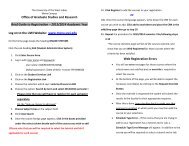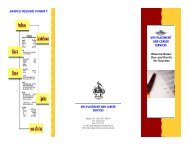Download Pdf - Uwi.edu
Download Pdf - Uwi.edu
Download Pdf - Uwi.edu
- No tags were found...
Create successful ePaper yourself
Turn your PDF publications into a flip-book with our unique Google optimized e-Paper software.
The research conducted by By Dr. Lila Rao andcollaborators presents an approach for the development,representation and evaluation of high quality formalontologies, with a focus on the coverage/completenessquality dimension. This quality dimension has beendefined as the extent to which the ontology covers thedomain of interest, or alternately as the differencebetween what is required of the ontology and what isavailable in the ontology. Our method is an extensionof the approach proposed by Gruninger and Fox, andincludes the following steps:1. The development of an Initial Ontological Structure(see Figure 1) using a hybrid approach that combines theLaddering knowledge elicitation technique with priorresults on ontologies relevant to the domain of interest.2. The development of a set of informal competencyquestions that will be used to help create and evaluatethe formal ontology.3. The translation of the Initial Ontological Structure tothe vocabulary of a sorted logic. This provides part of thelanguage for the formal ontology.4. The specification of a set of axioms describingthe concepts and relationships between them. Thecompetency questions will be used to help specify theseaxioms.An important application of this method is for thedevelopment of disaster recovery plans (DRPs),particularly for Small Island States such as exist in theCaribbean. A DRP focuses on ensuring the speedyrestoration of services for critical organizationalprocesses in the event that there are operationalfailures due to natural or man-made disasters. It aimsto minimize potential loss by identifying, prioritizingand safeguarding those organizational assets that aremost valuable and that need the most protection. Acomparison of the characteristics of ontologies and therequirements of a DRP shows that an ontology cansupport the development of an effective DRP in anumber of ways, thus:1. It provides a common language for allstakeholders, thus r<strong>edu</strong>cing confusion and ambiguitythat may arise when different groups of stakeholderscome together to make decisions as is common indisaster recovery planning.2. The use of a common language in the developmentof a DRP would facilitate the sharing of DRPs amongorganizations.3. If the quality dimensions for DRPs can beaddressed through the use of an ontology, it is likelythat, if the quality of the ontology is high, then thequality of the DRP will be high. Additionally, as theontology is a formal description, the evaluation canbe automated, which makes the evaluation processmore efficient and is likely to lead to improved qualityof the ontology.This method could applied to other regionallyrelevantdomains, including Healthcare, SportsManagement, Tourism Management and CriminalInvestigation ManagementLila Rao is the Academic Director and a lecturer atthe Mona School of Business at The University of theWest Indies, Mona.lila.Rao@uwimona.<strong>edu</strong>.jm88 89


